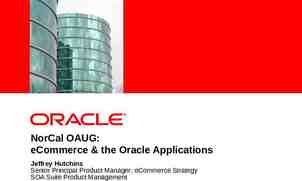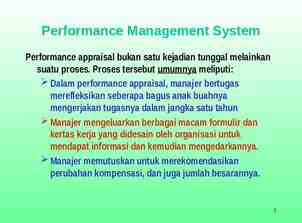Information Security CS 526 Topic 12-13 Software Vulnerabilities
56 Slides886.50 KB
Information Security CS 526 Topic 12-13 Software Vulnerabilities CS526 Topic 12-13: Software Vulnerabilities 1
Readings for This Lecture Wikipedia Privilege escalation Directory traversal Time-of-check-to-time-of-use Buffer overflow Stack buffer overflow Buffer overflow protection Format string attack Integer overflow Smashing The Stack For Fun And Profit by Aleph One CS526 Topic 12-13: Software Vulnerabilities 2
Why Software Vulnerabilities Matter? When a process reads input from attacker, the process may be exploited if it contains vulnerabilities. When an attacker successfully exploits a vulnerability, he can – Crash programs: Compromises availability – Execute arbitrary code: Compromises integrity – Obtain sensitive information: Compromises confidentiality Software vulnerability enables the attacker to run with privileges of other users, violating desired access control policy CS526 Topic 12-13: Software Vulnerabilities 3
Attacks Exploiting Software Vulnerabilities Drive-by download (drive-by installation) – malicious web contents exploit vulnerabilities in browsers (or plugins) to download/install malware on victim system. Email attachments in PDF, Word, etc. Network-facing daemon programs (such as http, ftp, mail servers, etc.) as entry points. Privilege escalation – Attacker on a system exploits vulnerability in a root process and gains root privilege CS526 Topic 12-13: Software Vulnerabilities 4
Common Software Vulnerabilities Input validation Race conditions – Time-of-check-to-time-of-use (TOCTTOU) Buffer overflows Format string problems Integer overflows CS526 Topic 12-13: Software Vulnerabilities 5
Sources of Input that Need Validation What are sources of input for local applications? – – – – – Command line arguments Environment variables Configuration files, other files Inter-Process Communication call arguments Network packets What are sources of input for web applications? – Web form input – Scripting languages with string input CS526 Topic 12-13: Software Vulnerabilities 6
Command line as a Source of Input: A Simple example void main(int argc, char ** argv) { char buf[1024]; sprintf(buf,”cat %s”,argv[1]); system (“buf”); } What can go wrong? Can easily add things to the command by adding ;, using e.g., “a; ls” User can set command line arguments to almost anything, e.g., by using execve system call to start a program, the invoker has complete control over all command line arguments. CS526 Topic 12-13: Software Vulnerabilities 7
Environment variables Users can set the environment variables to anything – Using execve – Has some interesting consequences Examples: – PATH – LD LIBRARY PATH – IFS CS526 Topic 12-13: Software Vulnerabilities 8
Attack by Resetting PATH A setuid program has a system call: system(ls); The user sets his PATH to be . (current directory) and places a program ls in this directory The user can then execute arbitrary code as the setuid program Solution: Reset the PATH variable to be a standard form (i.e., “/bin:/usr/bin”) CS526 Topic 12-13: Software Vulnerabilities 9
Attack by Resetting IFS However, you must also reset the IFS variable – IFS is the characters that the system considers as white space If not, the user may add “s” to the IFS – system(ls) becomes system(l) – Place a function l in the directory Moral: things are intricately related and inputs can have unexpected consequences CS526 Topic 12-13: Software Vulnerabilities 10
Attack by Resetting LD LIBRARY PATH Assume you have a setuid program that loads dynamic libraries UNIX searches the environment variable LD LIBRARY PATH for libraries A user can set LD LIBRARY PATH to /tmp/attack and places his own copy of the libraries here Most modern C runtime libraries have fixed this by not using the LD LIBRARY PATH variable when the EUID is not the same as the RUID or the EGID is not the same as the RGID CS526 Topic 12-13: Software Vulnerabilities 11
Input Validation Issues in Web Applications SQL injection – Caused by failure to validate/process inputs from web forms before using them to create SQL queries Cross Site Scripting – Caused by failure to validate/process inputs from web forms or URL before using them to create the web page Cross Site Request Forgery is not an input validation issue Next few slides show more web app input validation attacks CS526 Topic 12-13: Software Vulnerabilities 12
A Remote Example: PHP passthru Idea – PHP passthru(string) executes command – Web-pages can construct string from user input and execute the commands to generate web content – Attackers can put “;” in input to run desired commands Example echo 'Your usage log: br / '; username GET['username']; passthru(“cat /logs/usage/ username”); What if: “username andrew;cat%20/etc/passwd”? CS526 Topic 12-13: Software Vulnerabilities 13
Directory Traversal Vulnerabilities in Web Applications A typical example of vulnerable application in php code is: ?php template 'red.php'; if ( isset( COOKIE['TEMPLATE'] ) ) template COOKIE['TEMPLATE']; include ( "/home/users/phpguru/templates/" . template ); ? Attacker sends GET /vulnerable.php HTTP/1.0 Cookie: TEMPLATE ./././././././././etc/passwd CS526 Topic 12-13: Software Vulnerabilities 14
Checking input can be tricky: Unicode vulnerabilities Some web servers check string input – Disallow sequences such as ./ or \ – But may not check unicode %c0%af for '/' IIS Example, used by Nimda worm http://victim.com/scripts/././winnt/system32/cmd.exe? some command – passes some command to cmd command – scripts directory of IIS has execute permissions Input checking would prevent that, but not this http://victim.com/scripts/.%c0%af.%c0%afwinnt/system32/. – IIS first checks input, then expands unicode CS526 Topic 12-13: Software Vulnerabilities 15
Input Validation Summary Lessons: – Malicious inputs can become code, or change the logic to do things that are not intended – Inputs interact with each other, sometimes in subtle ways Use systematic approaches to deal with input validation – Avoid checking for bad things (blacklisting) if possible The logic for blacklisting may not be exhaustive Code where input is used may have different logic – Instead, check for things that are allowed (whitelisting) – Or, use systematic rewriting CS526 Topic 12-13: Software Vulnerabilities 16
Time-of-check-to-time-of-use TOCTTOU, pronounced "TOCK too“ A class of software bug caused by changes in a system between the checking of a condition (such as authorization) and use of the results of the check. – When a process P requests to access resource X, the system checks whether P has right to access X; the usage of X happens later – When the usage occurs, perhaps P should not have access to X anymore. – The change may be because P changes or X changes. CS526 Topic 12-13: Software Vulnerabilities 17
An Example TOCTTOU In Unix, the following C code, when used in a setuid program, is a TOCTTOU bug: if (access("file", W OK) ! 0) { exit(1); } fd open("file", O WRONLY); write(fd, buffer, sizeof(buffer)); Attacker tries to execute the following line in another process when this process reaches exactly this time: Symlink(“/etc/passwd”, “file”) Here, access is intended to check whether the real user who executed the setuid program would normally be allowed to write the file (i.e., access checks the real userid rather than effective userid). CS526 Topic 12-13: Software Vulnerabilities 18
TOCTTOU Exploiting a TOCTTOU vulnerabilities requires precise timing of the victim process. – Can run the attack multiple times, hoping to get lucky Most general attack may require “single-stepping” the victim, i.e., can schedule the attacker process after each operation in the victim – Techniques exist to “single-step” victim Preventing TOCTTOU attacks is difficult CS526 Topic 12-13: Software Vulnerabilities 19
What is Buffer Overflow? A buffer overflow, or buffer overrun, is an anomalous condition where a process attempts to store data beyond the boundaries of a fixed-length buffer. The result is that the extra data overwrites adjacent memory locations. The overwritten data may include other buffers, variables and program flow data, and may result in erratic program behavior, a memory access exception, program termination (a crash), incorrect results or ― especially if deliberately caused by a malicious user ― a possible breach of system security. Most common with C/C programs CS526 Topic 12-13: Software Vulnerabilities 20
History Used in 1988’s Morris Internet Worm Alphe One’s “Smashing The Stack For Fun And Profit” in Phrack Issue 49 in 1996 popularizes stack buffer overflows Still extremely common today CS526 Topic 12-13: Software Vulnerabilities 21
Types of Buffer Overflow Attacks Stack overflow – Shell code – Return-to-libc Overflow sets ret-addr to address of libc function – Off-by-one – Overflow function pointers & longjmp buffers Heap overflow CS526 Topic 12-13: Software Vulnerabilities 22
Linux process memory layout 0xC0000000 User Stack %esp Shared libraries 0x40000000 Run time heap Loaded from exec CS526 Unused Topic 12-13: Software Vulnerabilities 0x08048000 0 23
Stack Frame Parameters Return address Stack Frame Pointer Local variables SP CS526 Topic 12-13: Software Vulnerabilities Stack Growth 24
What are buffer overflows? Suppose a web server contains a function: void func(char *str) { char buf[128]; strcpy(buf, str); do-something(buf); } When the function is invoked the stack looks like: buf sfp ret-addr str What if *str is 136 bytes long? After strcpy: *str CS526 ret Topic 12-13: Software Vulnerabilities str 25
Basic stack exploit Main problem: no range checking in strcpy(). Suppose *str is such that after strcpy stack looks like: *str ret Code for P top of stack Program P: exec( “/bin/sh” ) (exact shell code by Aleph One) When func() exits, the user will be given a shell !! Note: attack code runs in stack. CS526 Topic 12-13: Software Vulnerabilities 26
Carrying out this attack requires Determine the location of injected code position on stack when func() is called. – So as to change RET on stack to point to it – Location of injected code is fixed relative to the location of the stack frame Program P should not contain the ‘\0’ character. – Easy to achieve Overflow should not crash program before func() exits. CS526 Topic 12-13: Software Vulnerabilities 27
Some unsafe C lib functions strcpy (char *dest, const char *src) strcat (char *dest, const char *src) gets (char *s) scanf ( const char *format, ) sprintf (conts char *format, ) CS526 Topic 12-13: Software Vulnerabilities 28
Other control hijacking opportunities In addition to overwrite return address on the stack, can also use overflow to overwrite the following: Function pointers: (used in attack on PHP 4.0.2) buf[128] FuncPtr Heap or stack – Overflowing buf will override function pointer. Longjmp buffers: longjmp(pos) (used in attack on Perl 5.003) – Overflowing buf next to pos overrides value of pos. CS526 Topic 12-13: Software Vulnerabilities 29
return-to-libc attack “Bypassing non-executable-stack during exploitation using return-to-libs” by c0ntex Overflow ret address to point to injected shell code requires execution of injected code – Many defenses exist Return-to-libc overwrites the return address to point to functions in libc (such as system()) – Executing existing code – But set up the parameters so that the attacker gets a shell CS526 Topic 12-13: Software Vulnerabilities 30
return-to-libc attack Illustrating return-to-libc attack *str ret Code for P Shell code attack: Program P: exec( “/bin/sh” ) system() in libc *str CS526 Return-to-libc attack: ret fake ret “/bin/sh” Topic 12-13: Software Vulnerabilities 31
Return-oriented programming Goal: executing arbitrary code without injecting any code. Observations: – Almost all instructions already exist in the process’s address space, but need to piece them together to do what the attacker wants Attack: – Find instructions that are just before “return” – Set up the stack to include a sequence of addresses so that executing one instruction is followed by returning to the next one in the sequence. Effectiveness: has been shown that arbitrary program can be created this way CS526 Topic 12-13: Software Vulnerabilities 32
Off by one buffer overflow Sample code func f(char *input) { char buf[LEN]; if (strlen(input) LEN) { strcpy(buf, input) } } What could go wrong here? CS526 Topic 12-13: Software Vulnerabilities 33
Heap Overflow Heap overflow is a general term that refers to overflow in data sections other than the stack – buffers that are dynamically allocated, e.g., by malloc – statically initialized variables (data section) – uninitialized buffers (bss section) Heap overflow may overwrite other date allocated on heap By exploiting the behavior of memory management routines, may overwrite an arbitrary memory location with a small amount of data. – E.g., SimpleHeap free() does hdr- next- next- prev : hdr- next- prev; CS526 Topic 12-13: Software Vulnerabilities 34
Finding buffer overflows Hackers find buffer overflows as follows: – Run web server on local machine. – Fuzzing: Issue requests with long tags. All long tags end with “ ”. – If web server crashes, search core dump for “ ” to find overflow location. Some automated tools exist. Then use disassemblers and debuggers (e.g IDA-Pro) to construct exploit. How to defend against buffer overflow attacks? CS526 Topic 12-13: Software Vulnerabilities 35
Preventing Buffer Overflow Attacks Use type safe languages (Java, ML). Use safe library functions Static source code analysis. Non-executable stack Run time checking: StackGuard, Libsafe, SafeC, (Purify), and so on. Address space layout randomization. Detection deviation of program behavior Access control to control aftermath of attacks (covered later in course) CS526 Topic 12-13: Software Vulnerabilities 36
Static source code analysis Statically check source code to detect buffer overflows. – Several consulting companies. Main idea: automate the code review process. Several tools exist: – Example: Coverity (Engler et al.): inconsistency. Test trust Find lots of bugs, but not all. CS526 Topic 12-13: Software Vulnerabilities 37
Bugs to Detect in Source Code Analysis Some examples Crash Causing Defects Null pointer dereference Use after free Double free Array indexing errors Mismatched array new/delete Potential stack overrun Potential heap overrun Return pointers to local variables Logically inconsistent code CS526 Uninitialized variables Invalid use of negative values Passing large parameters by value Underallocations of dynamic data Memory leaks File handle leaks Network resource leaks Unused values Unhandled return codes Use of invalid iterators Topic 12-13: Software Vulnerabilities 38
Marking stack as non-execute Basic stack exploit can be prevented by marking stack segment as non-executable. – Support in Windows since XP SP2. Code patches exist for Linux, Solaris. Problems: – Does not defend against return-to-libc’ or “returnoriented programming”. – Some apps need executable stack (e.g. LISP interpreters). – Does not block more general overflow exploits: Overflow on heap, overflow func pointer. CS526 Topic 12-13: Software Vulnerabilities 39
Run time checking: StackGuard There are many run-time checking techniques StackGuard tests for stack integrity. – Embed “canaries” in stack frames and verify their integrity prior to function return. Frame 2 local CS526 Frame 1 canary sfp ret str local canary sfp ret str Topic 12-13: Software Vulnerabilities top of stack 40
Canary Types Random canary: – Choose random string at program startup. – Insert canary string into every stack frame. – Verify canary before returning from function. – To corrupt random canary, attacker must learn current random string. Terminator canary: Canary 0, newline, linefeed, EOF – String functions will not copy beyond terminator. – Hence, attacker cannot use string functions to corrupt stack. CS526 Topic 12-13: Software Vulnerabilities 41
Randomization: Motivations. Buffer overflow, return-to-libc, and return-oriented programing exploits need to know the (virtual) address to which pass control – Address of attack code in the buffer – Address of a standard kernel library routine Same address is used on many machines – Slammer infected 75,000 MS-SQL servers using same code on every machine Idea: introduce artificial diversity – Make stack addresses, addresses of library routines, etc. unpredictable and different from machine to machine CS526 Topic 12-13: Software Vulnerabilities 42
Address Space Layout Randomization Arranging the positions of key data areas randomly in a process' address space. – e.g., the base of the executable and position of libraries (libc), heap, and stack, – Effects: for return to libc, needs to know address of the key functions. – Attacks: Repetitively guess randomized address Spraying injected attack code Vista has this enabled, software packages available for Linux and other UNIX variants CS526 Topic 12-13: Software Vulnerabilities 43
Format string problem int func(char *user) { fprintf( stdout, user); } Problem: what if user “%s%s%s%s%s%s%s” ? – Most likely program will crash: DoS. – If not, program will print memory contents. Privacy? – Full exploit using user “%n” Correct form: int func(char *user) { fprintf( stdout, “%s”, user); } CS526 Topic 12-13: Software Vulnerabilities 44
Format string attacks (“%n”) printf(“%n”, &x) will change the value of the variable x – in other words, the parameter value on the stack is interpreted as a pointer to an integer value, and the place pointed by the pointer is overwritten CS526 Topic 12-13: Software Vulnerabilities 45
History Danger discovered in June 2000. Examples: – wu-ftpd 2.* : remote root. – Linux rpc.statd: remote root – IRIX telnetd: remote root – BSD chpass: local root CS526 Topic 12-13: Software Vulnerabilities 46
Vulnerable functions Any function using a format string. Printing: printf, fprintf, sprintf, vprintf, vfprintf, vsprintf, Logging: syslog, err, warn CS526 Topic 12-13: Software Vulnerabilities 47
Integer Overflow Integer overflow: an arithmetic operation attempts to create a numeric value that is larger than can be represented within the available storage space. Example: Test 1: short x 30000; short y 30000; printf(“%d\n”, x y); Test 2: short x 30000; short y 30000; short z x y; printf(“%d\n”, z); Will two programs output the same? What will they output? CS526 Topic 12-13: Software Vulnerabilities 48
C Data Types short int 16bits [-32,768; 32,767] unsigned short int 16bits [0; 65,535] unsigned int 16bits [0; 4,294,967,295] Int 32bits [-2,147,483,648; 2,147,483,647] long int 32 bits [-2,147,483,648; 2,147,483,647] signed char 8bits [-128; 127] unsigned char 8 bits [0; 255] CS526 Topic 12-13: Software Vulnerabilities 49
When casting occurs in C? When assigning to a different data type For binary operators , -, *, /, %, &, , , – if either operand is an unsigned long, both are cast to an unsigned long – in all other cases where both operands are 32-bits or less, the arguments are both upcast to int, and the result is an int For unary operators – changes type, e.g., ((unsigned short)0) is int – and -- does not change type CS526 Topic 12-13: Software Vulnerabilities 50
Where Does Integer Overflow Matter? Allocating spaces using calculation. Calculating indexes into arrays Checking whether an overflow could occur Direct causes: – Truncation; Integer casting CS526 Topic 12-13: Software Vulnerabilities 51
Integer Overflow Vulnerabilities Example (from Phrack) int main(int argc, char *argv[]) { unsigned short s; int i; char buf[80]; if (argc 3){ return -1; } i atoi(argv[1]); s i; if(s 80) { printf(“No you don't!\n"); return -1; } printf("s %d\n", s); memcpy(buf, argv[2], i); buf[i] '\0'; printf("%s\n", buf); return 0; } CS526 Topic 12-13: Software Vulnerabilities 52
Integer Overflow Vulnerabilities Example Example: const long MAX LEN 20K; Char buf[MAX LEN]; short len strlen(input); if (len MAX LEN) strcpy(buf, input); Can a buffer overflow attack occur? If so, how long does input needs to be? CS526 Topic 12-13: Software Vulnerabilities 53
Another Example int ConcatBuffers(char *buf1, char *buf2, size t len2) { char buf[0xFF]; if ((len1 len2) 0xFF) return -1; memcpy(buf, buf1, len1); memcpy(buf len1, buf2, len2); return 0; } CS526 Topic 12-13: Software Vulnerabilities size t len1, 54
Yet Another Example // The function is supposed to return false when // x y overflows unsigned short. // Does the function do it correctly? bool IsValidAddition(unsigned short x, unsigned short y) { if (x y x) return false; return true; } CS526 Topic 12-13: Software Vulnerabilities 55
Coming Attractions Malwares CS526 Topic 12-13: Software Vulnerabilities 56





























































